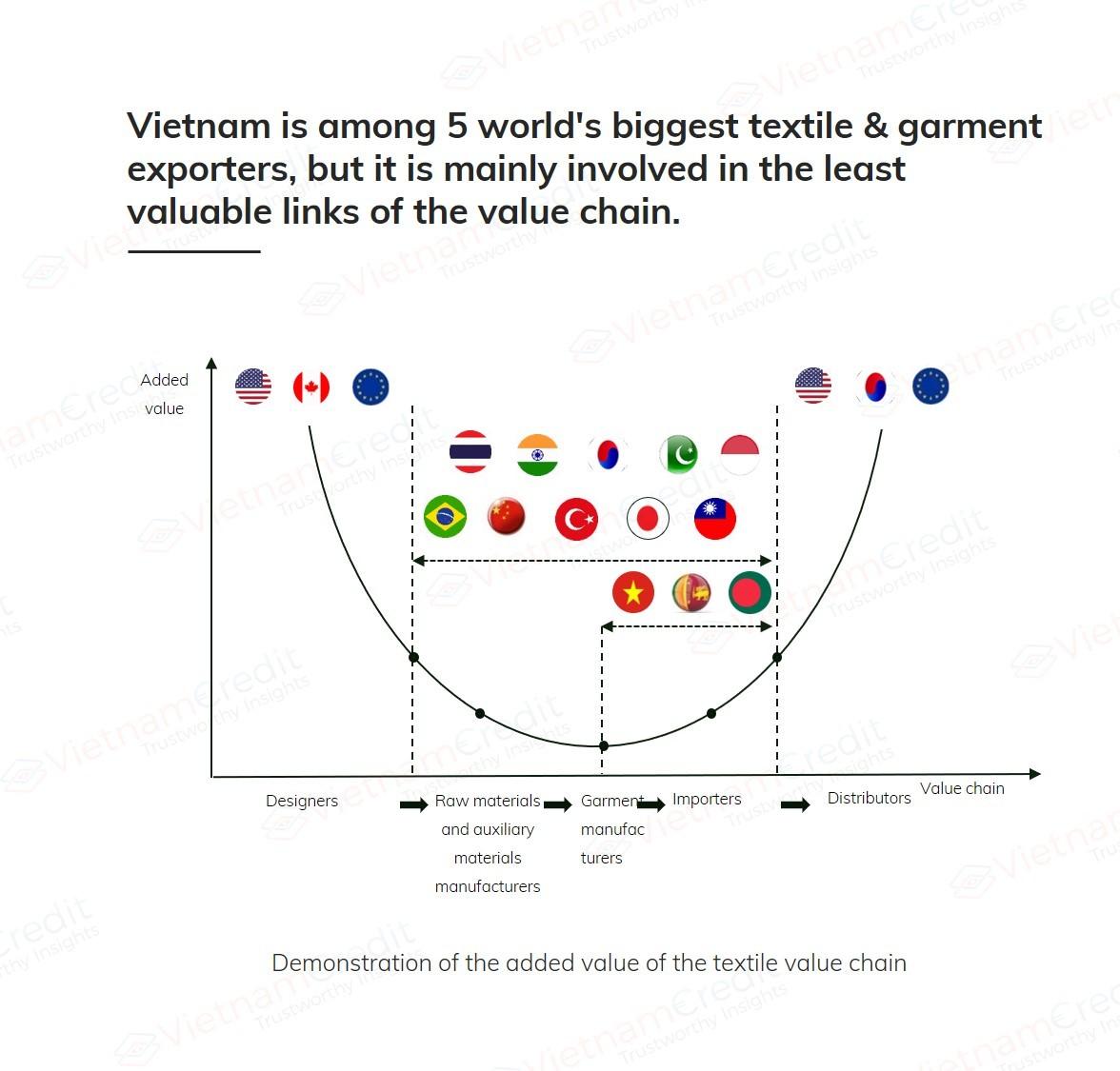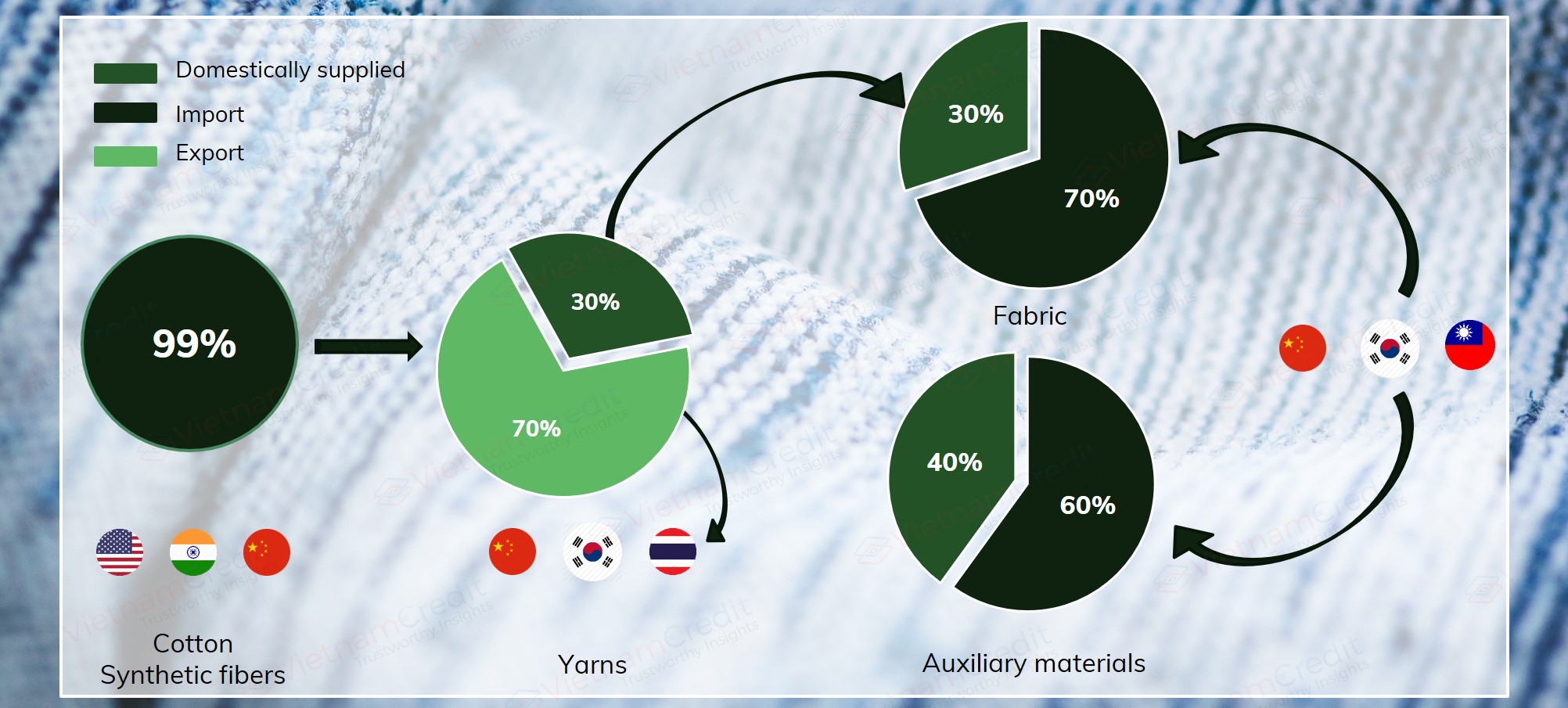Vietnam’s textile and garment industry is predicted to benefit from a free trade agreement that will come into effect starting January 2022. Textile and garment exports have returned to pre-pandemic levels and are forecast to grow positively in 2022.
How will Vietnam’s textile and garment industry benefit from RCEP?
According to the Ministry of Industry and Trade, the Regional Comprehensive Economic Partnership (RCEP) agreement that will be in effect from January 1, 2022, will contribute to the multilateralization of free trade agreements that ASEAN has signed with each previous partner country.

After taking full effect for all signatories, RCEP will help create a market of 2.2 billion consumers, accounting for about 30% of the world's population and a GDP of about 26.2 trillion USD, equivalent to about 30% of global GDP, making it the largest free trade area in the world in terms of population size.
Therefore, the RCEP Agreement is expected to help create a stable and long-term export market for ASEAN countries in general and Vietnam in particular, contributing to promoting the implementation of the policy of building Vietnam’s export-oriented economy.
With the RCEP Agreement, Vietnam’s textile and garment industry will be opened to a large market with a less stringent level of commitment and easier requirements than the EU-Vietnam Free Trade Agreement (EVFTA), the Comprehensive and Progressive Agreement for Trans-Pacific Partnership (CPTPP).
Moreover, several countries participating in the RCEP have already been members of the CPTPP, which will solve the difficulties and challenges related to input materials since these countries can supply to help with the current shortage of raw materials in Vietnam.
In the past, textile and garment products entering the Japanese market were required to prove that the materials originated from ASEAN and Japan, but Vietnam imported most of the materials used in this industry from China. With the RCEP Agreement, Vietnamese garments made from Chinese materials also enjoy preferential tariffs when exported to the Japanese market.
Along with commitments to open markets for goods, services, and investments, RCEP creates a framework to simplify customs procedures and establish rules of origin, facilitate trade, creating a common production connection space in the whole ASEAN. The RCEP agreement will solve some major problems for textile and garment enterprises when China begins to import Vietnamese textile and garment products, opening up opportunities to penetrate this market.

Vietnam’s textile and garment export with bright prospects in 2022
The textile and garment industry is one of the key export industries in Vietnam and plays an important role in the growth of the economy, accounting for 12 - 16% of the country's total export turnover.
Vietnam’s textile and garment exports suffered greatly from the impact of COVID-19, but they have returned to pre-pandemic levels and are forecast to grow positively in 2022.
The Vietnam Textile and Apparel Association (VITAS) has just released a brief report on the production and business situation of the industry in 2021, with a positive growth rate. Accordingly, the export value of the whole industry is estimated at 39 billion USD, up 11.2% compared to 2020 and up 0.3% compared to 2019.

According to the Vietnam Bank for Investment and Development Securities Company (BSC), Vietnam's textile and garment industry is growing rapidly thanks to three factors, which are: The growth of domestic and international consumer demand for textiles, the transformation of the global textile and garment production value chain, and breakthrough opportunities from bilateral and multilateral free trade agreements.
Experts expect the prospects of Vietnam's textile and garment industry in 2022 will depend on the recovery of the United States and the EU. Specifically, the International Monetary Fund (IMF) and the World Bank (WB) forecast that global GDP growth will reach 4.9% in 2022 and the world textile and garment demand in 2022 will return to the level in 2019, reaching about 740 billion USD.
Source: The Ministry of Industry and Trade
Compiled by VietnamCredit


























































